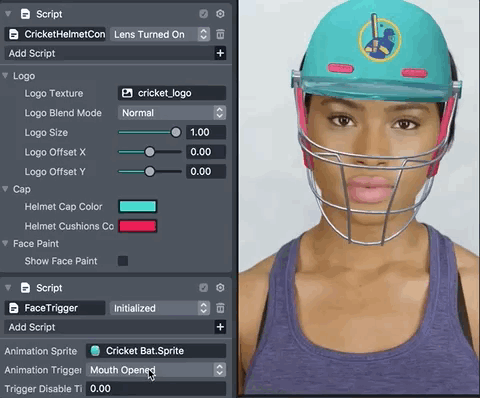
/do0bihdskp9dy.cloudfront.net/08-24-2022/t_9b6f0614b1f940a08e5a5358f546766e_name_file_1280x720_2000_v3_1_.jpg)
They are triggered by scanning an object or piece of merchandise, which the phone recognises, triggering the AR experience.
Image trackers: Finally, image trackers are object-specific. For example, they might move their head, open their mouth or raise their eyebrows as part of the gameplay. Users can play these games by moving their face in ways that will trigger it. Mini-games: mini-games are similar to face filters but slightly more complex. Users place the portal within their surroundings and then enter it through a doorway. Portals: portals are doors into an entire virtual environment that you can explore through your mobile screen. World effects: world effects are similar to face filters, except that content is placed in the user’s surrounding environment rather than on their face, using the rear phone camera. Face filters: these are layers of content that can be overlaid on a user’s face, such as the classic bunny ears filter. There are many types of AR content, but some of the most popular are: It allows you to place virtual objects within our world through the lens of a mobile device. HBO created a face filter on Instagram to celebrate the final season of Game of Thrones What’s AR?Īugmented reality (AR) is essentially a blending of the real and the virtual worlds. With Instagram AR opening up to brands this summer, AR campaigns are set to become more mainstream than ever before. If you are thinking of adopting AR in your marketing strategy, now is the perfect time. Users simply loved the effect and that was enough to generate word of mouth. One of our customers gained more than 20 million impressions on a face filter, despite putting 0 advertising budget behind it. This is because of the inherent viral nature of AR content as long as you create a compelling effect, users will capture it and share it with their friends, creating a snowball effect. 
One area where it is proving particularly effective is in marketing and advertising. The potential of AR is tremendous across industries and use cases. Unsurprisingly, businesses are rising to the occasion by creating AR campaigns that are helping them increase audience engagement and truly stand out from competitors. AR campaigns: why you need them and how you can use them ByĪugmented reality (AR) is quickly disrupting the way we consume and share information, with a staggering 3.5 billion augmented reality users projected by 2022.


/do0bihdskp9dy.cloudfront.net/08-24-2022/t_9b6f0614b1f940a08e5a5358f546766e_name_file_1280x720_2000_v3_1_.jpg)



 0 kommentar(er)
0 kommentar(er)
